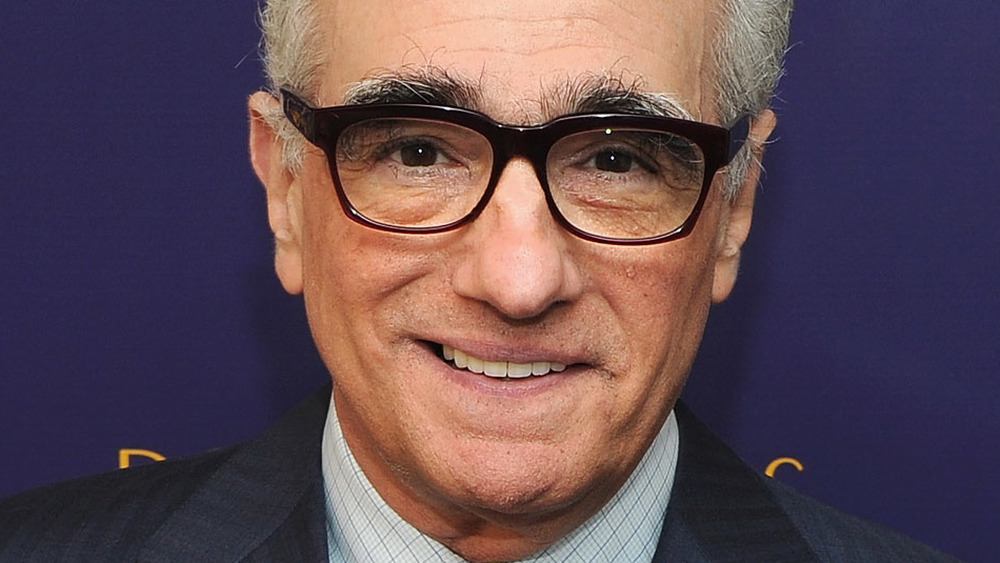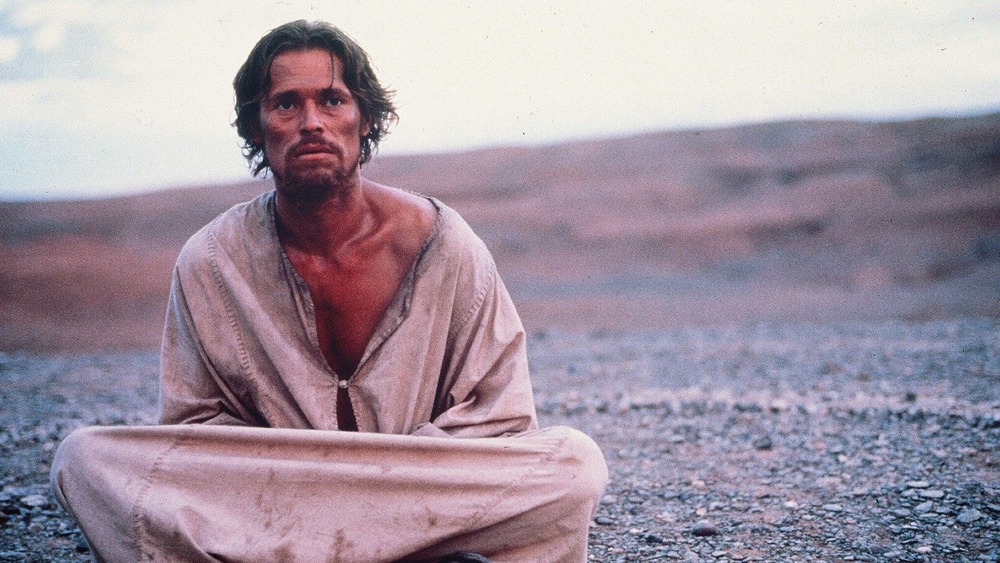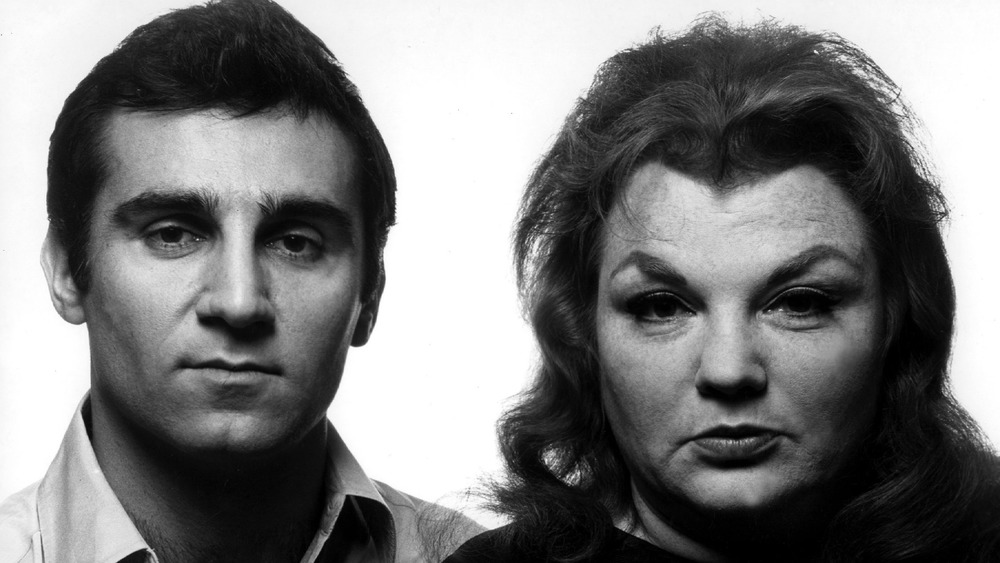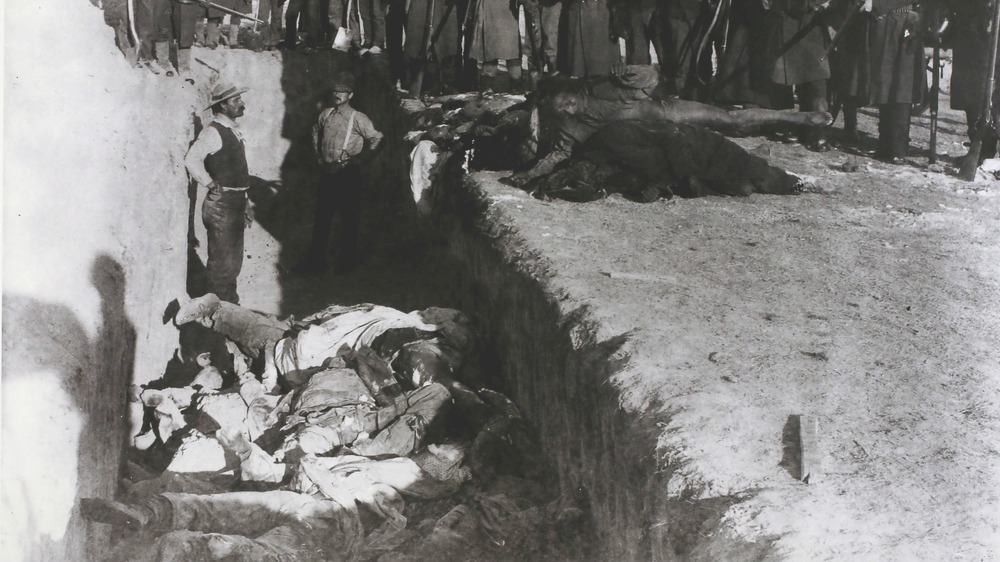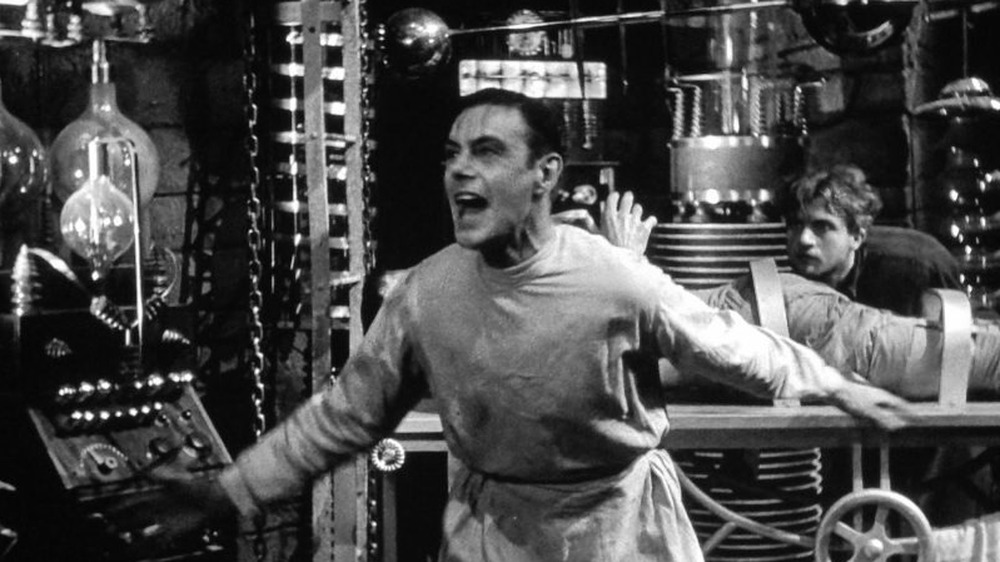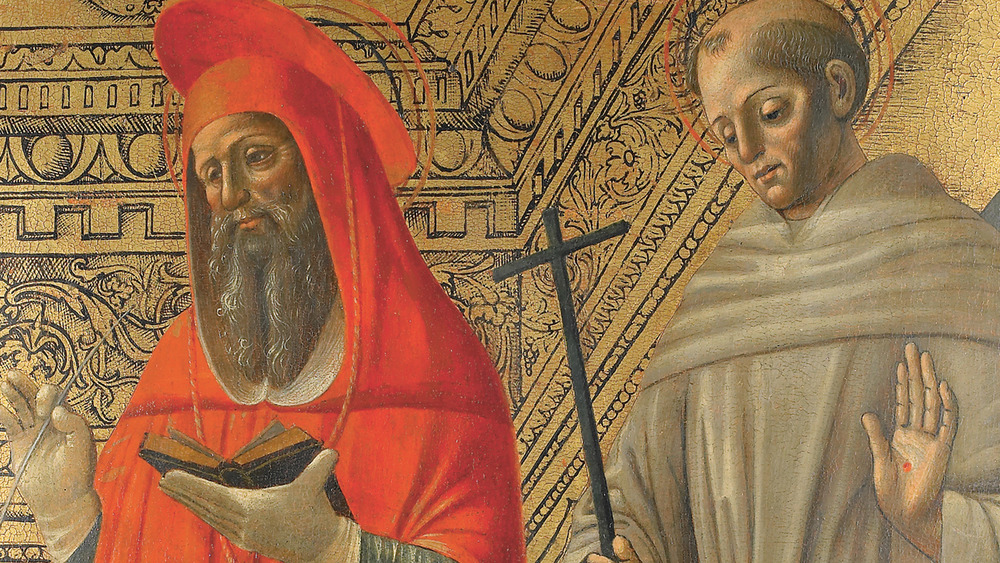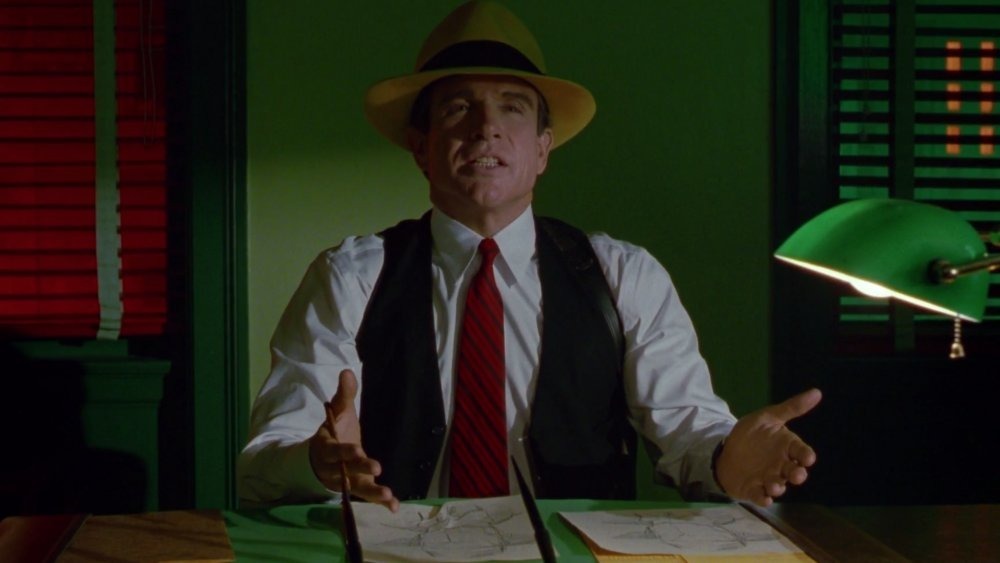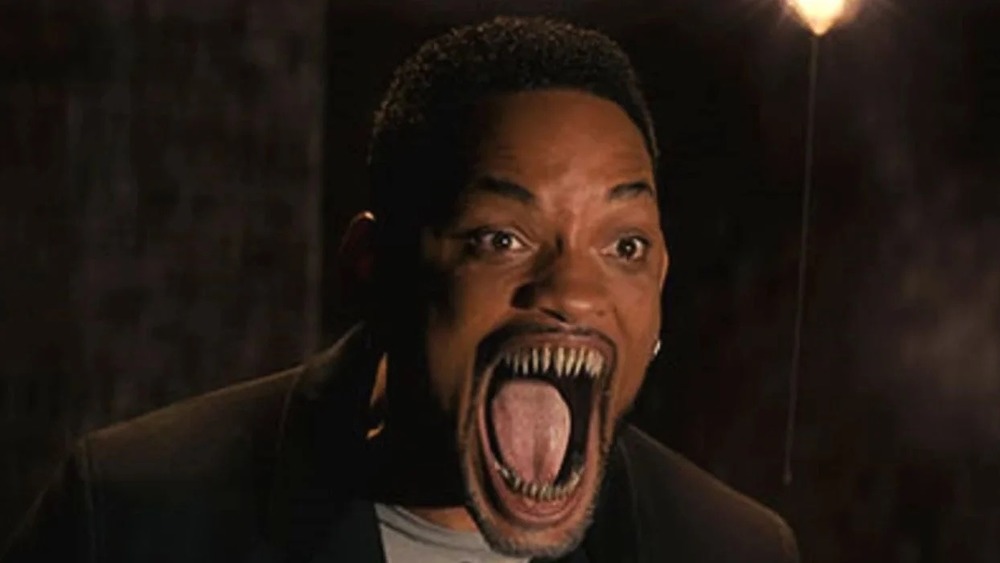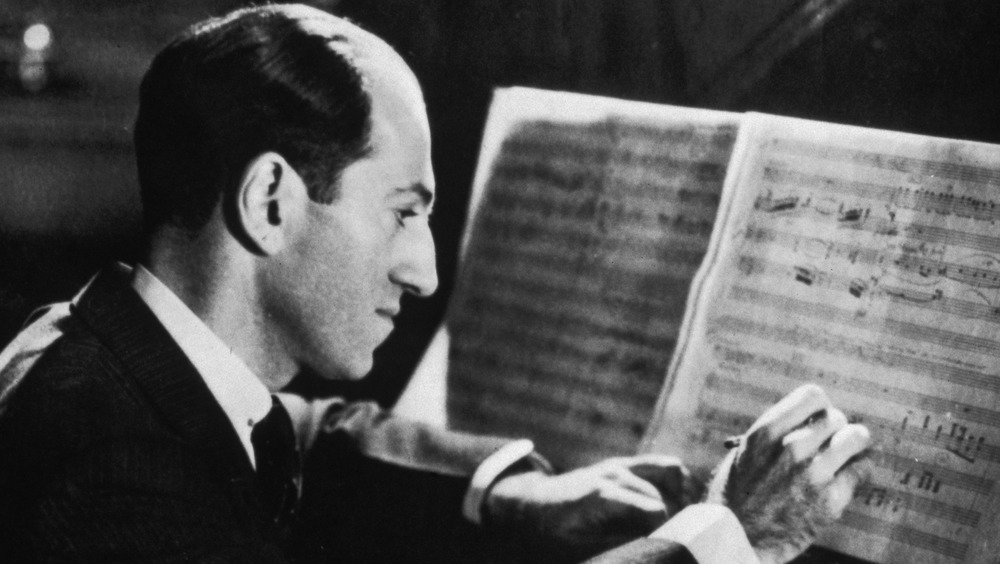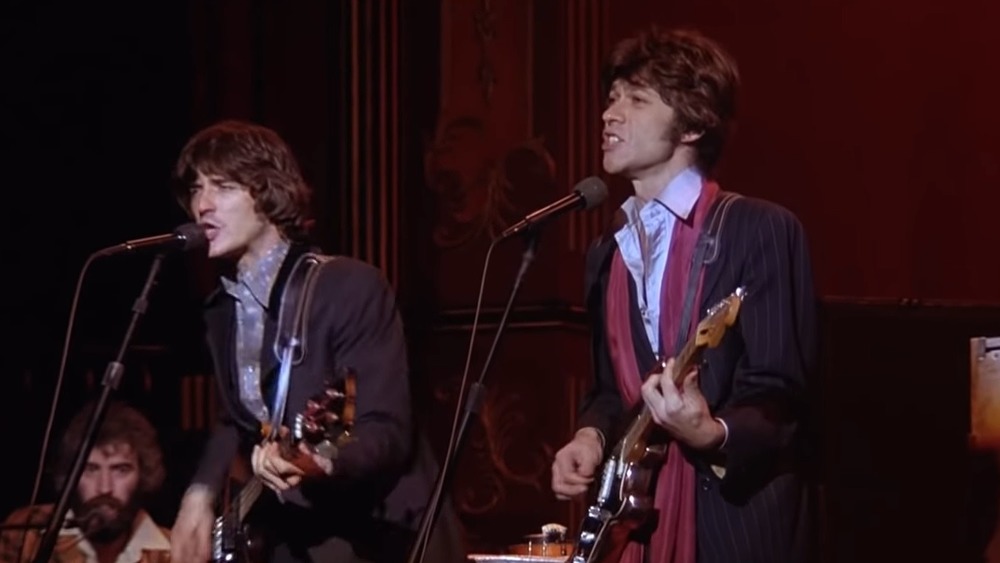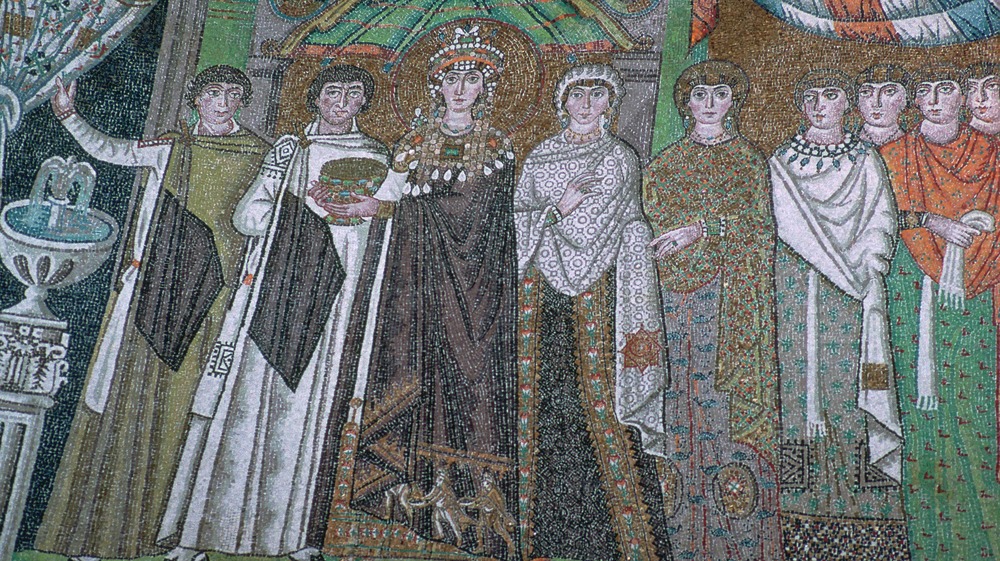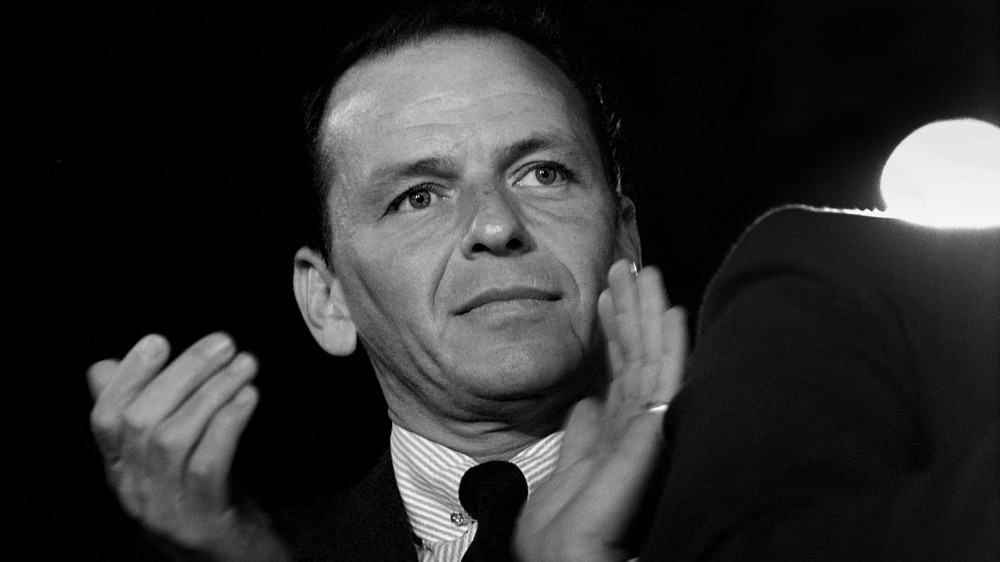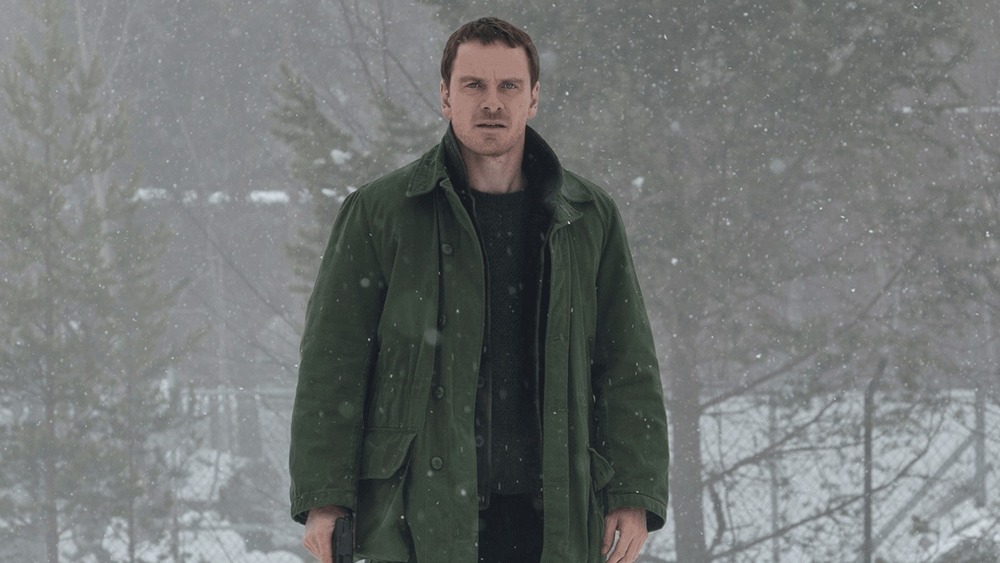Martin Scorsese Movies We'll Never Get To See
Martin Scorsese is responsible for some of the greatest movies of the past 50 years. He's directed seedy crime dramas like Taxi Driver, Mean Streets, and The Departed. He's made sweeping historical epics like Hugo, The Aviator, and The Last Temptation of Christ. And he's responsible for films that are a little bit of both, such as Goodfellas, The Irishman, and Gangs of New York.
But as with every great filmmaker, the list of classic movies that could've been but never were is at least as long. Like all of them, Scorsese has decades of passion projects that fate stood in the way of, ideas that turned into something totally different by the time they reached the screen, and for-hire jobs that either he or his producers decided he just wasn't right for, even though his fans might strongly disagree. Scorsese's never made a bad movie, so it's easy to imagine any one of these films might've been great. At the very least, they certainly would've been interesting. Here are just a few of the most tantalizing possibilities.
Martin Scorsese almost put Jesus in New York
The project that would eventually become The Last Temptation of Christ originally took a very different form, and as much as we'd hate to lose the movie we got, this alternate version looks intriguing in its own right.
From the very beginning of his career, Scorsese hoped to make a movie about the life of Christ right in his own neighborhood. He told Commonweal, "I had realized you could start making films with 16-millimeter black-and-white ... and I had a dream that I could maybe make a film someday. And immediately I thought of making a film of the Gospel but set on the Lower East Side, in the tenements, in modern dress."
According to Scorsese, he wanted to bring Jesus to where he grew up (the Bowery), where he could help "the alcoholics who were dying in the streets" and reach out to people in "the underworld." As the director asked, "What if we do a film, and Jesus is here, on 8th Avenue?" However, Scorsese dropped the idea when he saw Pier Paolo Pasolini's classic The Gospel According to Matthew and realized he couldn't do a low-budget passion play as well as Pasolini did. We think he's being too modest, and as happy as we are to have Temptation, this early version would've been totally unique.
Things could've gotten schlocky with The Honeymoon Killers
Scorsese made his feature debut with the microbudget, autobiographical Who's That Knocking at My Door?, which would form the blueprint for his mainstream breakthrough with Mean Streets. But around the same time, he was also working on a very different kind of crime movie, one that might've pointed his career in a whole different direction.
First-time producer Leonard Kastle picked up Scorsese to helm The Honeymoon Killers, a low-budget exploitation thriller based on the true story of two lovers who solicited murder victims through personals ads. Scorsese recalled his brief, disastrous shoot to Richard Schickel in Conversations with Scorsese, saying, "Instead of just making the film, I was trying to make a reputation. And I twisted and turned it in different ways stylistically. I tried to make it something it shouldn't have been." As Scorsese explained, he was trying to craft a film in the vein of Carl Dreyer, the austere Swedish director who made The Passion of Joan of Arc. That's the last thing you'd want for a lurid exploitation flick. He adds, "I was fired from that after one week, and rightly so."
The Honeymoon Killers recovered. In fact, it's become a cult classic. And Scorsese would return to the B-movie salt mines again with another true story of criminal lovers in Boxcar Bertha. But it's fascinating to imagine how differently his career might've gone. Would he still have become the prestigious filmmaker he is today, or would he have continued turning his gifts to schlockier fare?
Scorsese almost teamed up with Brando for a truly tragic story
After the success of his masterpiece, Taxi Driver, Scorsese became a hot ticket in Hollywood. Screenwriters, actors, and producers came to him with all kinds of possible projects, some more exciting than others. Godfather star Marlon Brando approached him with an especially intriguing proposition. Brando was passionate about Native American rights, famously giving over his time at the Oscars to Apache activist Sacheen Littlefeather. He planned to put that struggle on-screen with a dramatization of the infamous massacre at Wounded Knee, and Rolling Stone reports Scorsese was his choice to direct.
The movie never materialized, but it could've been something special. Scorsese has tried his hand at nearly every genre the movies can offer, but never the Western, which has been close to his heart ever since he was a kid hiding out in the movie theaters in Little Italy. (He's said the cowboy classic The Searchers inspired Taxi Driver, for instance.) But setting out his camera in the wide open spaces of the American West where the masters worked might've inspired some of Scorsese's finest work. And putting Scorsese and Brando's prestige and talent behind a movie about the crimes the American people have suppressed or whitewashed for centuries would've been a powerful statement.
Things could've been spooky with Haunted Summer
Scorsese eventually decided to follow up Taxi Driver with the musical New York, New York, a movie that wasn't particularly big with critics. The director might've had better luck if he'd taken another of the scripts that Scorsese on Scorsese says he was offered at the time, one that would've taken him to another classic genre.
Anne Edwards' novel Haunted Summer finds a story behind the creation of Mary Shelley's Frankenstein that's just as fascinating as the novel itself, looking at the debauched summer Shelley spent with two of the other great poets of her era, Percy Shelley and Lord Byron.
Scorsese would've been an excellent fit for the project, which was eventually completed in 1988. He would go on to prove his unique talent at capturing the Victorian era with The Age of Innocence and Gangs of New York. And despite tantalizing glimpses in movies like After Hours, Cape Fear, and Shutter Island, Scorsese has never fully tried his hand at horror outside an episode of the Amazing Stories anthology series.
But that's not for lack of interest. One of his favorite movies ever made is Peeping Tom, a precursor to Psycho, and he's talked at length about his love for the Shelley-ish Gothic horror of producer Val Lewton and Hammer studios. It's easy to imagine the masterpiece he could've made out of the creation of Frankenstein, but sadly, that's all we can do.
He wanted to tour the lives of the saints
His movies may have been denounced by conservative religious groups (especially the allegedly blasphemous Last Temptation), but Scorsese's Catholic faith was central to his upbringing, and it's remained the heart and soul of his movies. And for many years, he contemplated a project that would've put those concerns front and center.
The official Vatican website, La Civiltá Cattolica, once asked Scorsese, "After Raging Bull, you thought of going to Rome and to travel to shoot documentaries on the lives of the saints. Is that so?" Scorsese confirmed the story and went on to explain some of his inspiration, including not just his childhood education but also one of his heroes, Roberto Rossellini, who directed The Flowers of St. Francis and explored whether a saint could exist in the modern world with Europa '51. "So I thought RAI [the Italian national TV network, where Rossellini had worked] was going to be a place where I could explore a question that has always obsessed me: What is a saint? My idea was to make a series of films about different saints. ... How do they relate to people, in general and spiritually? What is their day-to-day life like?"
The project never came together, but these questions would inspire two of Scorsese's longest-gestating passion projects, The Last Temptation of Christ and Silence. Ironically, the closest Scorsese got to filming the lives of the saints took him to a different religion altogether, with his saint-like portrayal of the Dalai Lama in Kundun.
Martin Scorsese almost took a crack at Dick Tracy
Bonnie and Clyde star Warren Beatty had a long-developing dream to bring his childhood hero, Dick Tracy, to the big screen. Beatty had grown up on Chester Gould's comics pitting the trenchcoated cop against colorful villains like Flattop and the Mole, bad guys who inspired the modern supervillain. And he'd been pushing to play Dick for almost 20 years before he finally got his chance in 1990. Beatty would end up directing the movie himself, but he courted some of Hollywood's biggest talents for the job, including Steven Spielberg, Walter Hill ... and Martin Scorsese.
You have to wonder how different Dick Tracy could've been with Scorsese at the helm. The director famously has no time for the current generation of comic book movies, but comics inspired some of his earliest creative pursuits as a kid, and many of his operatic epics have a disinterest in subtlety on par with superhero stories. Would he have found a middle ground between Gould's cartoon crooks and the gritty realism of Goodfellas? Or would he have applied his love and mastery of color to create something like the saturated Sunday funnies look of the final product? Would he have gotten to work with Al Pacino — who plays boss of bosses, Big Boy Caprice — decades before The Irishman? We'll never know, but that won't stop us asking.
He was offered the chance to tell a Winter's Tale
Mark Helprin's novel Winter's Tale is a sprawling story of a fantastical alternate New York City at the turn of the century, featuring warring newspapers, haunted lakes, and angelic horses and architects. It contains all kinds of things you'd think would appeal to Scorsese. It's a tribute to his beloved hometown, set in an era full of rich history he's yet to explore. It's got gangsters, and it's an opportunity to try out yet another new genre in the form of fantasy. And based on the surrealism of After Hours, the way Hugo fills Paris in the '30s with magic, and the matter-of-fact way Scorsese makes the supernatural shockingly real in The Last Temptation of Christ, he'd be darned good at it.
But Scorsese turned down the job, calling Helprin's novel "unfilmable." Maybe he was right. Winter's Tale finally premiered in 2014 under the guidance of prolific screenwriter Akiva Goldsman to universally scathing reviews. Goldsman reduced Helprin's phone book-sized narrative to a simplistic Hallmark card-style love story, and instead of toning down the whimsy for the more literal medium of film, Goldsman added his own, including one infamous appearance by a CGI-toothed Will Smith as Satan himself, wearing an anachronistic Jimi Hendrix T-shirt. We can't be sure what Scorsese would do with the material, but it has to be better than that.
Martin Scorsese keeps circling around George Gershwin
New York, New York was a box office bomb that nearly killed Scorsese's career just as it was getting started. But that didn't scare him off considering another musical project. Then again, it may be the reason he never finished it.
Throughout his career, news has repeatedly resurfaced that Scorsese's plan to film the life of George Gershwin, a composer who was instrumental in popularizing jazz with compositions like Rhapsody in Blue and the opera Porgy and Bess. Scorsese has worked on scripts with his frequent collaborator Paul Schrader and Six Degrees of Separation author John Guare. Scorsese on Scorsese described one especially intriguing mutation of the project as "a Paul Schrader script in the stylized mode of his Mishima" — referencing the writer-director's film on the life of Japanese novelist Yukio Mishima — intercut with gorgeous, fantastical scenes from Gerswhin's writings. Film Comment summarizes it more concretely, writing, "Lavish production numbers of Gershwin's works were to be related to scenes from his life as discussed by Gershwin on a psychologist's couch."
It's tantalizing to imagine what kind of fantasies Scorsese could spin out of Gershwin's work, which defined New York City in the popular imagination as much as Scorsese himself. But until those rumors resurface yet again, we'll just have to leave it up to our imaginations.
He almost made another rock doc with Robbie Robertson and Friends
Martin Scorsese is best known for his fictional films, but he's also had a long and profitable side gig making rock docs, starting with many people's favorite example of the whole genre, The Last Waltz. That movie chronicles the Band's final concert together, featuring guest appearances by some of the biggest names in rock, including Bob Dylan, Muddy Waters, and Joni Mitchell. It began Scorsese's long friendship with lead singer Robbie Robertson, who helped Marty put together the soundtracks for several of his movies, including the famous wall-to-wall rock hits of Casino.
In 1989, Robertson and Scorsese announced they were planning a sequel of sorts to The Last Waltz, called Robbie Robertson and Friends. The project began as a televised concert with "friends" Peter Gabriel and U2. Neither act was available, but instead of passing on the project, Robertson expanded it into a theatrical film. Scorsese on Scorsese quotes a Rolling Stone interview where Robertson said the movie would be "a combination of The Red Shoes [one of Scorsese's favorites] and All That Jazz, only dealing with music instead of dance."
It would've been something to see. Scorsese had already proven he worked well with Peter Gabriel via the artist's classic soundtrack for The Last Temptation of Christ. And while his collaboration with U2 is limited to the song they contributed to Gangs of New York, both artists share an operatic, deeply Christian style that we're sure would've meshed beautifully.
We're still waiting to see Theodora
After the success of Goodfellas put bigger budgets in his grasp, Scorsese proved he was the master of period pieces, with an eye for luxurious beauty, gritty realism, and details so specific you know they have to be accurate. Part of that comes from his childhood growing up on the Cinemascope spectacles of the '50s, but he's never quite followed in their footsteps with a true sword-and-sandals epic.
He did come close, though. Theodora would've skated past the first Roman Empire to look at the founding of the less-filmed Byzantine Empire. It would've been a true rags-to-riches story, about the titular historical figure who went from sex work to Emperor Justinian's wife to one of history's most powerful women.
And nothing but the best was good enough for the script, written by Gore Vidal, a legend in many fields including novels (Myra Breckinridge), nonfiction (Lincoln), and screenwriting (Caligula, plus an uncredited rewrite on Ben-Hur). A 1994 interview with the Los Angeles Times asked Vidal, "What's holding it up?" The author responded, "We're waiting on new technology, to show battle scenes without Ben-Hur prices. ... Marty says that seven years is about right to get a picture made nowadays." Well, it's been over 25 years, and still, we've got nothing,
Sinatra is Scorsese's lost masterpiece
If anyone's defined what it means to be Italian-American as much as Martin Scorsese, it's Frank Sinatra. And if anyone's defined what it means to be a New Yorker as much as Scorsese, that's Sinatra, too, thanks in no small part to his cover of the theme song from Scorsese's New York, New York. The biggest star of the crooning genre, Sinatra began his career in jazz master Tommy Dorsey's big band and survived the rise of rock and roll through a career that spanned half a century.
There's a lot of story there, and for almost a decade, it looked like Scorsese would be the man to bring it to the screen. Scorsese sounded thrilled about the project in an interview with ShortList, saying, "Here is a man who changed the entire image of the Italian-American. And that's just one thing. Along with his political work, civil rights, the Mob..." No doubt fans were thrilled, too.
But the Sinatra estate apparently didn't feel the same. "We can't do it!" Scorsese told The Toronto Sun in 2019. "I think it is finally over. ... Certain things are very difficult for a family, and I totally understand. But, if they expect me to be doing it, they can't hold back certain things. The problem is that the man was so complex." That may not appeal to the Sinatras, but it sure sounds like a lost masterpiece to us.
Martin Scorsese, you could have saved The Snowman
The Snowman was a universal laughingstock ever since the first poster debuted, with a childish letter to "Mister Police" and a doodle of a hilariously glum snowman. And the laughter didn't let up once the critics actually saw the dang thing, especially when it became apparent the actors were mispronouncing the name of protagonist Harry Hole ("hu-luh" in Norwegian) in the most hilarious way possible.
But it all could've been different. Director Tomas Alfredson couldn't rise above the rushed schedule and heavy-handed production, despite his experience helming the cult classics Let the Right One In and Tinker, Tailor, Soldier, Spy. But even he's no Scorsese. Who is?
And that's exactly who the producers initially went for. But Jo Nesbø, author of the original novel, told News in English the producers were "impatient and see that it will take time to wait for Scorsese." That checks out. In fact, they were so impatient that Alfredson had hardly any time to finish the job once he came aboard. Maybe Scorsese knew a sinking ship when he saw one. But even if the project was doomed no matter who took the reins, we have to imagine the master would've done something better with it. How could it be any worse?
